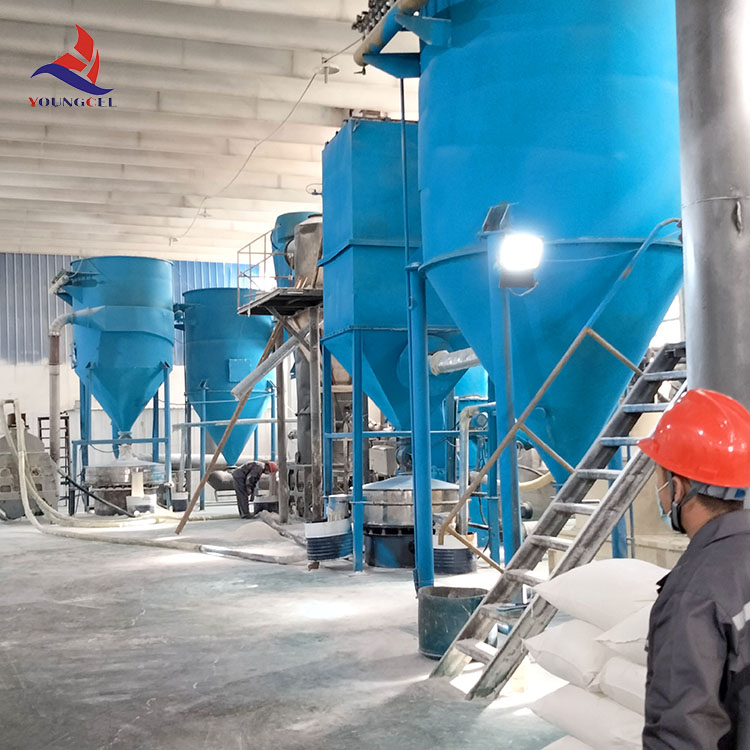Understanding Cellulose Powder Prices Factors and Trends
Cellulose powder, derived from natural cellulose sources, is a versatile ingredient widely used in various industries including food, pharmaceuticals, cosmetics, and plastics. Its functionality as a thickening agent, stabilizer, and bulking agent makes it an essential component for many products. As its applications expand, understanding the pricing dynamics of cellulose powder becomes increasingly crucial for manufacturers, suppliers, and consumers alike.
Factors Influencing Prices
1. Raw Material Sourcing The primary factor affecting cellulose powder pricing is the cost of raw materials. Cellulose is primarily sourced from wood pulp, cotton, and other plant fibers. Fluctuations in the availability and cost of these raw materials can directly impact cellulose powder prices. For instance, changes in forestry regulations, environmental policies, and agricultural practices can affect suppliers' ability to source high-quality cellulose.
2. Production Process The manufacturing process of cellulose powder also plays a significant role in determining its price. Different methods, such as chemical or mechanical processes, can yield varying grades of cellulose powder, each with distinct qualities and pricing structures. Advanced production techniques that enhance purity and reduce contamination may incur higher costs, which may be reflected in the final market price.
3. Market Demand The demand for cellulose powder in various sectors significantly influences its price. In the food industry, the rising popularity of healthy and natural products has increased the demand for cellulose as a bulking agent and stabilizer. Similarly, in the pharmaceutical sector, there is an ongoing trend towards the use of cellulose as an excipient in drug formulations. A surge in demand from these sectors can lead to increased prices, especially if supply does not keep pace.
4. Export and Import Dynamics Global trade policies, tariffs, and logistics can impact cellulose powder prices, particularly for countries reliant on imports or exports for raw materials. Changes in trade agreements can lead to significant price fluctuations. For example, if a major cellulose-producing country imposes export restrictions, global supply may diminish, causing prices to spike.
5. Technological Innovations Advances in technology and production methods can also lead to price changes. Innovations that enhance efficiency and reduce waste can lower production costs, potentially decreasing market prices. However, if new technologies involve high initial investments, such costs may lead to higher prices in the short term as manufacturers seek to recoup investments.
cellulose powder prices

6. Sustainability Trends As sustainability becomes a priority across industries, there is a growing focus on sourcing cellulose from renewable resources. This move towards sustainable practices can initially increase costs, as producers may need to invest in sustainable sourcing or processing technology. Over time, however, these efforts can stabilize prices as sustainable practices become the norm in the supply chain.
Current Market Trends
As of late 2023, the cellulose powder market has witnessed both price increases and volatility. With a heightened focus on health and nutrition, demand for cellulose in the food sector has surged. Additionally, the post-pandemic recovery in pharmaceutical production has driven usage in that industry as well. These factors combined have created upward pressure on prices.
Moreover, the global emphasis on sustainability is reshaping how companies approach cellulose sourcing. Many are now willing to pay a premium for sustainably sourced cellulose powder, further influencing market prices. Eco-conscious consumers are driving brands to invest in responsible sourcing, making sustainable cellulose a focal point for manufacturers.
Looking Ahead
The cellulose powder market is poised for continued evolution, and prices will remain influenced by a complex interplay of factors. Monitoring the dynamics of raw material costs, production methods, and global demand will be essential for stakeholders to navigate pricing trends effectively. Additionally, as industries further embrace sustainability, the understanding of cellulose powder prices in the context of environmental impact will grow in importance.
In conclusion, cellulose powder prices are driven by a range of factors from raw material costs to technological advancements and sustainability trends. As demand for cellulose across various sectors continues to grow, stakeholders must remain vigilant to the market shifts that will shape the pricing landscape in the years to come.






